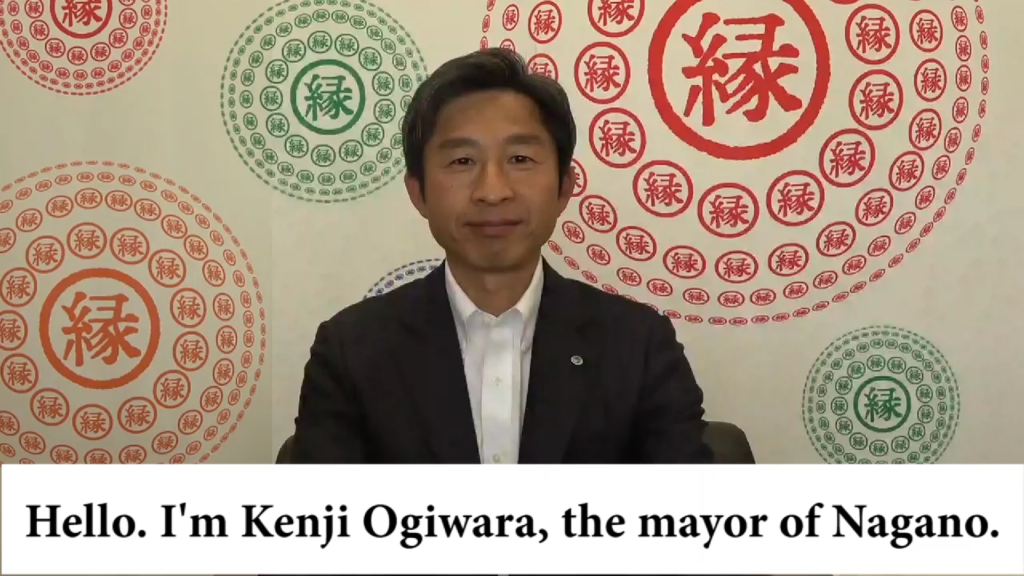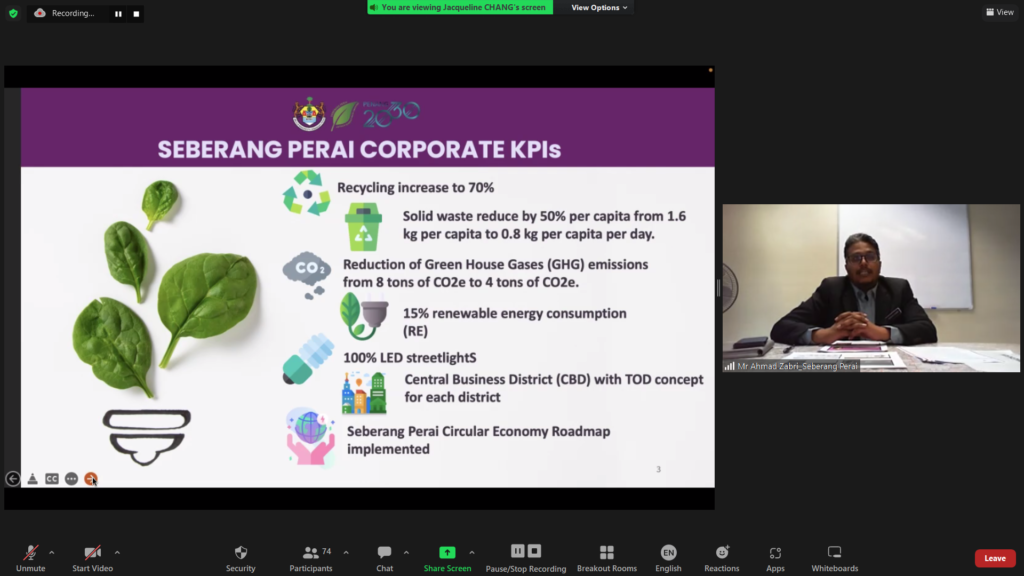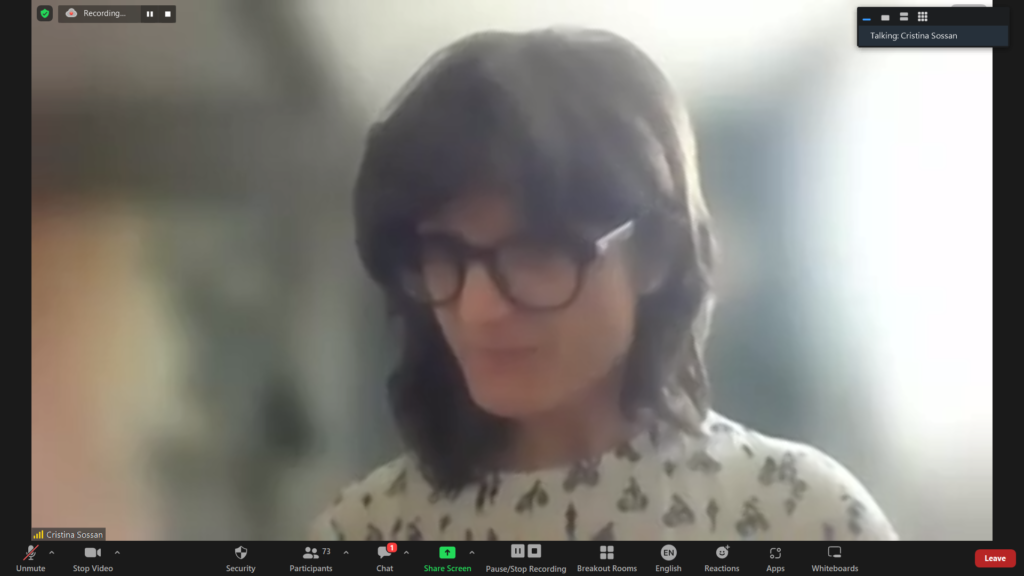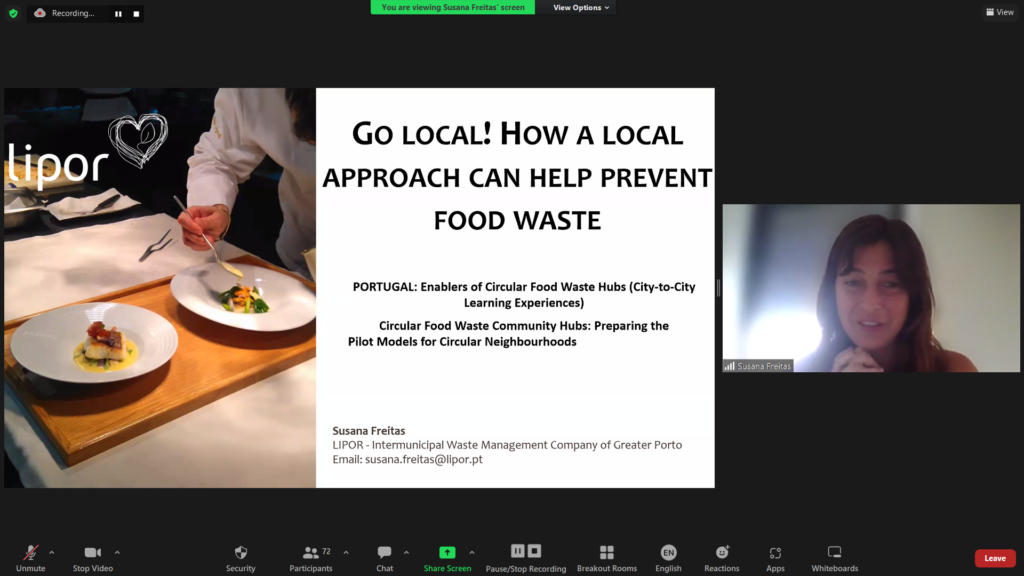IURC cities engaged in Circular Food Waste Community Hubs discussions and recommendations for Southeast Asia cities
The IURC Asia & Australasia’s 8th thematic webinar on 21 June 2022 attracted 134 registered participants from 25 countries, namely Australia, China, India, Indonesia, Ireland, Japan, Thailand, Mongolia, New Zealand, South Korea, Pakistan, Philippines, Sri Lanka, Qatar, Vietnam, Belgium, Bulgaria, Finland, Germany, Italy, Netherlands, Portugal, Sweden, Switzerland and Spain.
The webinar was organised jointly by Ms. Jacqueline Chang, IURC Country Coordinator in Malaysia (who was also the moderator) with IURC Country Coordinators Ms. Phương Thảo Nguyen (Vietnam as Co-Host), Mr. Siriwat Pokrajen (Thailand) and the Japanese team led by Mr. Hidefumi Imura (Japan) with Ms. Lena Lindahl (Pairing Manager), Ms. Michiko Inoue, Ms. Yatsuka Kataoka and Ms. Ryoko Nakano from the Helpdesk and Management section.
The session presented past and precent projects that aim at accelerating and scaling up the Circular Food Waste Community Hubs in Nagano (Japan), Seberang Perai (Malaysia), Famalicão and LIPOR (Portugal), and Milan (Italy). The Mayors and their city experts also shared lessons learned, digital tools/platforms used for monitoring and tracking, ways to empower community volunteers, for example, the ‘for the people by the people’ model. These projects provide better public services more efficiently, re-imagine food smart cities, offer hands-on education at eco-schools & collaborate with school canteens, promote zero waste markets, and create Communities of Practice in circular food waste to better protect the well-being of citizens.

Mr. Pekka Penttilä, Trade and Economic Attaché from the Delegation of the European Union to Malaysia, provided opening remarks and highlighted that the first Circular Economy Cluster Webinar on 14 December 2021 on Circular City Hubs: Improving thriving, liveable, resilient urban centres enabled us to engage with many IURC cities and their key stakeholders in several regions from 23 countries.
He shared that the outcome of the webinar resulted in 13 IURC cities from 9 countries (Australia, India, Indonesia, Malaysia, Thailand, Japan, Finland, New Zealand, Portugal) completing a circular economy cluster spreadsheet for an inclusive stock take. This resulted in the following outcomes: the top three waste streams identified were food waste in 5 cities, wastewater treatment in 4 cities and plastic circularity, which is connected to food waste, in 3 cities. He highlighted that the continuation with the second circular economy cluster webinar with the IURC cities in Southeast Asia and their key stakeholders is aimed at benefiting them with key insights, statistics and solutions from other cities in Japan, Malaysia, Portugal and Italy to contribute important inputs to help scale up the pilot projects that are currently being implemented on the ground.
Key takeaways from the second thematic webinar


Mr. Kenji Ogiwara, Mayor of Nagano (Japan), and the city expert Mr. Yutarou Arai, Manager Biomass Promotion Team, New Industry Creation Department, Nagano, presented circular use of food waste in the framework of the Nagano City Biomass Industrial City Concept 2021, which was created after Nagano City Biomass Town Vision was established in 2010 and the big typhoon disaster in 2019. To realise a new vision of a zero-carbon city by 2050, a sustainable city, strong in the face of natural disaster and self-reliant through the use of local resources, the Nagano City Biomass Industry City Concept was created in June 2021.
In summary, the Nagano City Biomass Industry City Concept has realised the following:
- Transforming forest residues and waste mushroom growth medium to solid fuel where citizens used it in stoves and for boilers.
- Electricity was generated from forest biomass.
- Nagano city in 2020 calculated there was a potential use of 91,000 tons of food waste per year that can be incinerated for heat and electricity.
- Currently, seven municipalities are cooperating to manage the food waste, merging four incineration plants into two locations to scale its merits and increasing the amount of energy produced as well. For example, electricity from the waste incineration plant is used in schools and the heat is used to generate warm water in swimming pools. The incineration sludge is used as back-filling material for infrastructure construction.
- The methane fermentation and electricity generation project of food waste has been using the organic waste from food processing facilities, mostly in Nagano.
- For the organic waste with higher water content, the technology for bio gasification power generation was used and it increased the production of more energy, both heat and electricity for Nagano city. In addition, the remainder after the fermentation process has been used as fertilizer. The plant is expected to serve as an emergency power source and will start operations in 2024.
- The major industry for Nagano city is the use of waste medium from mushroom cultivation. This was scaled from 44,000 tons to 51,000 tons, previously used as fertilizer. They disclosed that this project used several methods to generate the following assets. For example, dried waste from the waste incineration plant was made into fodder for cows or solid fuel; bio briquettes are produced by drying and compressing the material and used as an alternative to fossil coke in the casting business and methane fermentation.


YBhg. Dato’ Azhar bin Haji Arshad, Mayor of Seberang Perai (Malaysia), and the city expert Mr. Ahmad Zabri bin Mohamed Sarajuddin, Director of Urban Services Department, presented the Seberang Perai Circular Economy Roadmap 2021-2030 (8 key result areas related to waste to be achieve by 2030) and its commitment to uphold the Penang 2030 agenda “A Family Focused Green and Smart State that Inspires The Nations”. Seberang Perai City Council’s post-Covid-19 economic focus is to treat 100% of domestic solid waste (160 tons generated per day) by moving away from linear management to circular actions to better manage urban and rural operations related to food waste. The Mayor and the city expert explained this by sharing how they are converting (a) waste to protein, (b) waste to compost, and (c) waste to energy. To accelerate the projects on the ground, smart partnerships have been created with multiple stakeholders. One example shared was how the city council has collaborated with UPSI and URBANEST to develop a green education centre focusing on digital farming (using IoT technology) which is self-sustaining where proceeds are reinvested in their operational costs cycle. The application of hydroponics and fertigation technology has attracted the participation of 30 communities (North, Central and South Districts). To increase participation, the best projects are selected to reward replicable urban farming practices. These examples demonstrated how Seberang Perai has been localising the 17 SDGs and how they have mainstreamed it in their local agendas. A flagship project to look out for is the integrated solid waste management centre (ISWMC), which will be operationalised in 2025 in Ampang Jajar and will comprise of a leachate treatment plant and a managing office. Study visits will be conducted in due course.

Mr. Augusto Lima, City Councillor, Famalicão City Council, delivered his presentation by sharing four flagship circular economy projects in Famalicão city to create Circular Food Waste Community Hubs. These project aim to reduce food waste by 50% by 2030 with local action groups after formulation of key food waste and organic waste policies.
- Zero waste market & Circular Square under Resourceful Cities Project managed to eliminate the unnecessary waste in the market (e.g. plastic bags) and replaced them with sustainable options such as compostable and reusable bags. The project promoted ways to recover and (re)use market waste to its full potential, even before the recycling process (e.g. turn the organic waste, plastic, wood, metal and paper waste as resource for new circular material/products), and shared knowledge at the circular square with market clients and market operators towards a sustainable/circular approach/mindset by helping them to develop eco-competences.
- Eco-schools projects was established in 1996 as the fundamental foundation for green education where students create various living groups to tackle food and organic waste at school canteens. One project was the canteen brigade at the neighbourhood social centre under Centro Social Bairro. The food waste collected from school canteens are given to nearby animal farms and converted to animal feedstock.
3. ReFood Famalicão is a citizen led community movement established in 2014, empowering 140 volunteers to address a key problem: “End the food waste and fight the hunger”. Here, volunteers are trained to service the needy community and respond to the socio-economic weaknesses inherent in the poorer communities. This model has a goal to unite the community in order to support the most needy families in Famalicão – the Refood families and converted food waste into fertilizer. This has directed a lot of food waste which would otherwise end up in landfills.
4. Minority Denim – Biotint – Organicum Tinctura is a company servicing other textile companies in countries like Spain, Tunisia, Morocco, Pakistan and Dubai. Their industrial applicability is 100% organic with a mindset – “colouring the world with nature”. It started as a laboratory lab developing techniques to convert organic waste (forest waste, coffee grinds and onion waste) to dye textile fabrics. Today it is helping textile businesses to become more eco-friendly and sustainable by using organic dyes and eliminating chemical dyes in their supply chain.
For further information and links on the examples shared by Famalicão, please see our project website news covering a recent visit of a Malaysian delegation to the city: https://www.iurc.eu/2022/05/30/malaysia-takes-the-lead-in-study-visits/

Mr. Cristina Sossan, Food Policy Officer, Education Department, City of Milan, on behalf of Mr. Andrea Magarini, Director for Food Policy Area (Milan) – Mayor’s Office and Chair of the Eurocities Working Group Food, shared Milan’s leadership in the area of urban food policy (developed in 2015) that acts on the urban food system with a multi-dimensional approach. She showcased several interesting projects localising SDG 16 (Peace, Justice & Strong Institutions) engaging several local actors such as research centres, food businesses, food banks, not-for-profit organisations, and foundations to work on projects such as urban agriculture for school canteens; the Local Food Waste Hub, which facilitates food donation from supermarkets and company canteens to charities and has won the Earthshot Prize of Prince William; and the Stakeholders Analysis Tool helping to map all the stakeholders in a food system.
Their waste tax reduction piloted in 2018 have impacted 208 tons of food from 6 companies with 50 supermarkets, 311 tons of fruit/vegetables from 5 big retailers, 130 tons of bread/fruit from 106 school canteens and 6.4 tons of food from 7 pilot small retailers resulting in 660 tons of food saved.
Four local food waste hubs has been established in Milan itself which works collectively to save 120 tons of food losses per year. The city also pays attention to the environmental impact, where they have committed to reducing 25% of food-related greenhouse gas (GHG) emissions by 2030.
To sign the Milan Urban Food Policy Pact, cities have to complete a subscription form by providing the name and contact details of a Focal Point and undersigned by the Mayor. A very good way to join the network would be signing the Pact and at the same time submitting practices to the Milan Pact Awards (https://www.milanurbanfoodpolicypact.org/milan-pact-awards/milan-pact-awards-2022/). The deadline for submission is 30th June 2022 for this year.

Ms. Susana Freitas, Senior Technician | Project Manager (Food Waste Prevention Specialist), represented LIPOR, Portugal, an intermunicipal waste management company of Greater Porto. She explained how some local approaches were being applied in their food waste reduction strategy by focusing on restaurants, canteens, partnerships with entities/associations and families via workshops and collaboration with the Portuguese Association for Nutrition. The Dose Certa project (The right portion project) was able to reduce food waste in restaurants up to 30%. EMBRULHA. (Wrap it up dot) was a pilot project implemented in 2016, in partnership with Porto Municipal Council, in 117 restaurants of Porto as a complement to the Dose Certa project. The 5 municipalities worked together to change the habits of the citizens for a food waste-free country. From 2017-2021, 32,335.10 tons of food were saved, 6,795.9 tons of carbon emissions were avoided and EURO 1,616,757.70 of waste treatment costs was avoided. Currently, seven European cities are piloting actions to close the loop. A food demand management model has been developed. It is a mathematical tool for predicting food waste in the social economy and tourism sector. It will be used as a daily management tool of food demand and supply fluctuation in these sectors. This will also be supported by the circularity decision making support tool and the circular procurement guidelines for the social economy and tourism sector.
Presentations
Nagano City Biomass Industry City Concept – Circular Food Waste Video | Slide
Seberang Perai City: Food Waste Challenges, Critical Barriers and Current Solutions Video | Slide
Famalicão City: Four Flagship Projects
Milan City: Milan Food Policy, Food Waste Reduction & Circular Economy for Food
LIPOR: Go Local ! How a Local Approach can help Prevent Food Waste
